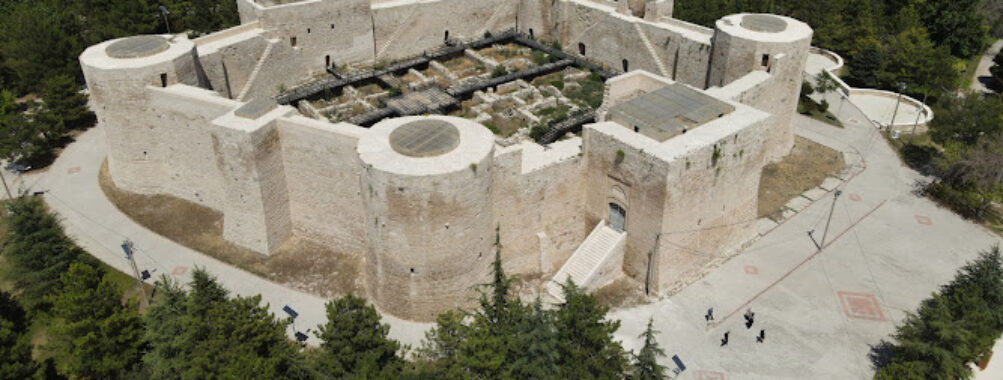
Karaman Fortress
Table of Contents
Description
The Karaman Fortress, dating back to the late 11th and early 12th centuries, stands as a remarkable testament to medieval military architecture in Turkey. Built with three concentric walls, this ancient stronghold combines elements from multiple historical periods, including Bronze Age, Roman, and Byzantine influences. The inner castle, perched atop a historic mound, remains the best-preserved section and showcases impressive architectural details that have withstood the test of time.
I was particularly struck by the fortress’s nine towers – four circular and five square – which create an imposing silhouette against the skyline. The Ottoman Empire’s restoration work in 1465 added an interesting layer to the fortress’s history, as they cleverly incorporated fragments and inscriptions from previously damaged structures into the castle walls. You can still spot these architectural pieces today, like a historical puzzle waiting to be decoded.
Key Features
• Three-tiered defensive system with outer, middle, and inner fortification walls
• Nine well-preserved towers featuring both circular and square designs
• Historical mound foundation containing artifacts from multiple civilizations
• Original Seljuk period architectural elements and later Ottoman modifications
• Remaining sections of the middle fortress walls circling the central mound
• Strategic elevated position offering panoramic views of the surrounding landscape
• Unique blend of military architectural styles spanning several centuries
• Historical inscriptions and architectural fragments integrated into the walls
• Traditional medieval defensive features including arrow slits and battlements
• Archaeological evidence of Bronze Age settlements beneath the fortress
Best Time to Visit
Spring (April to May) and autumn (September to October) offer the most pleasant conditions for exploring the Karaman Fortress. During these months, the temperature stays comfortable for climbing the fortress walls and exploring the grounds. Summer days can get pretty intense – trust me, I learned this the hard way during a July visit! The early morning hours, especially between 8-10 AM, provide the best lighting for photography and fewer crowds.
Winter visits have their own charm, but you’ll want to bundle up and check the weather forecast. Some sections might be slippery after rainfall, so plan accordingly. Sunset visits during any season are magical, as the golden hour light creates stunning photo opportunities of the ancient stonework.
How to Get There
The fortress sits prominently in central Karaman, making it easily accessible from the city center. From the main bus terminal, you can take a local bus or grab a taxi for a quick ride. If you’re driving, several parking areas are available near the base of the fortress hill. And ya know what’s great? The site offers wheelchair-accessible entrance points and parking, making it more inclusive for all visitors.
For those coming from other cities, regular bus services connect Karaman with major destinations like Konya, Ankara, and Istanbul. Once in Karaman, the fortress’s distinctive silhouette serves as an excellent landmark for navigation.
Tips for Visiting
Comfortable walking shoes are an absolute must – those ancient stones can be tricky to navigate! I always recommend bringing a water bottle, especially during warmer months. The site has some shaded areas, but sun protection is essential. A good camera is worth carrying too, as the fortress offers numerous photo opportunities, particularly of the architectural details and city views.
Consider spending at least 2-3 hours exploring the fortress to fully appreciate its historical significance. The morning tends to be less crowded, perfect for those seeking quieter moments to soak in the atmosphere. If you’re interested in the historical details, downloading a digital guide beforehand can enhance your visit, as on-site information might be limited.
Visiting during local festivals or cultural events can add an extra dimension to your experience. The fortress occasionally hosts historical reenactments and cultural performances, though these events aren’t regularly scheduled. You might want to check with the local tourist office about any upcoming events.
Remember to respect the site’s historical significance – stick to marked paths and avoid climbing on fragile sections of the walls. And here’s a pro tip: bring some snacks and water, as there aren’t many facilities directly at the fortress. The views from the top make for a perfect picnic spot, especially during sunset hours.
For photography enthusiasts, the golden hours of early morning and late afternoon offer the most dramatic lighting conditions. The play of light and shadow on the ancient stones creates stunning visual opportunities that really bring out the fortress’s character.
In my experience, combining your fortress visit with other nearby historical sites makes for an enriching day trip. The local area has several other attractions worth checking out, and the fortress serves as an excellent starting point for exploring Karaman’s rich cultural heritage.
Location
Places to Stay Near Karaman Fortress
Find and Book a Tour
Explore More Travel Guides
No reviews found! Be the first to review!